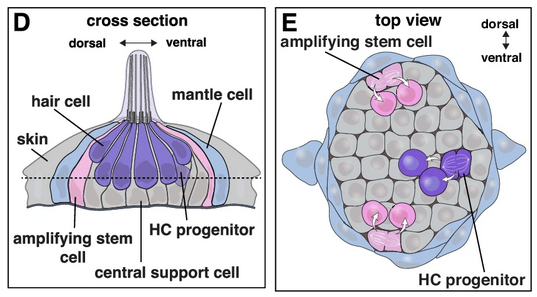By Kathleen Wallace, Au.D.
Dr. Wallace takes questions and shares knowledge via social media, including TikTok @EarDocOfTikTok.
Audiologists, like many healthcare providers, are trained on what is called “the transtheoretical model of the stages of change.”
While a mouthful to say, this framework provides a formula that outlines a patient’s readiness to change. In audiology, this means a patient getting hearing devices (hearing aids or implants), from the precontemplation stage through to maintenance and exit.
The average person waits between seven and 10 years from when they first notice hearing difficulties to when they see a hearing care provider to do something about it. This stage is considered precontemplation. They may begin to have some awareness of hearing healthcare, but it is likely clouded by stigma, fear, denial, or a lack of understanding (including fees and insurance concerns).
The contemplation stage is entered when the person more actively pursues information about hearing healthcare, whether it is through their own research or with the assistance of a hearing care provider. They are likely realizing that action will be needed, but it is still unclear when this time may be.
The next stage, preparation, indicates an even greater readiness for change. The patient may be already in the care of an audiologist or ENT, have had a hearing test, and is weighing the possible options. This may include significant research on the different types and costs of devices, asking friends or colleagues for recommendations, and becoming a more informed consumer. This stage can take time as the patient does their due diligence.
Once this stage is completed, the patient takes action. They are capable of successfully using amplification. They are probably also feeling some relief at finally getting to this point, but also feeling uncertainty about what is to come.
Lastly, after action comes maintenance. In this stage, the patient has successfully changed their behavior, and now they are strengthening their self-sufficiency as a new hearing device user, including the mastery of its operation and the addition of self-advocacy and communication strategies.
The maintenance phase then leads to the exit, when the behavior change is successfully implemented, but relapsing and needing further assistance is also possible. The patient may need a refresher from their hearing care provider, some tweaking in programming, or perhaps recommitting to try amplification again.
As an audiologist, I know that a thorough understanding of this framework bolsters counseling and the delivery of person-centered care with concrete goals. For patients, the model outlines step by step what may be happening organically already (as this patient new to hearing aids shares).
And for both of us, there are free trial periods for hearing aids—ask your provider for details!
Find Hearing Health editorial committee member Kathleen Wallace, Au.D., at @EarDocOfTikTok on TikTok, @kathleenwallaceaud on Instagram, via TunedCare at tunedcare.com, and at her practice in New York City. For more, see kathleenwallaceaud.com. This appeared in the Summer 2023 issue of Hearing Health magazine.







Before I discovered CART, I often felt left out, despite being physically present. This gap in awareness affects thousands of people. That’s why I speak up, because access delayed is opportunity denied.